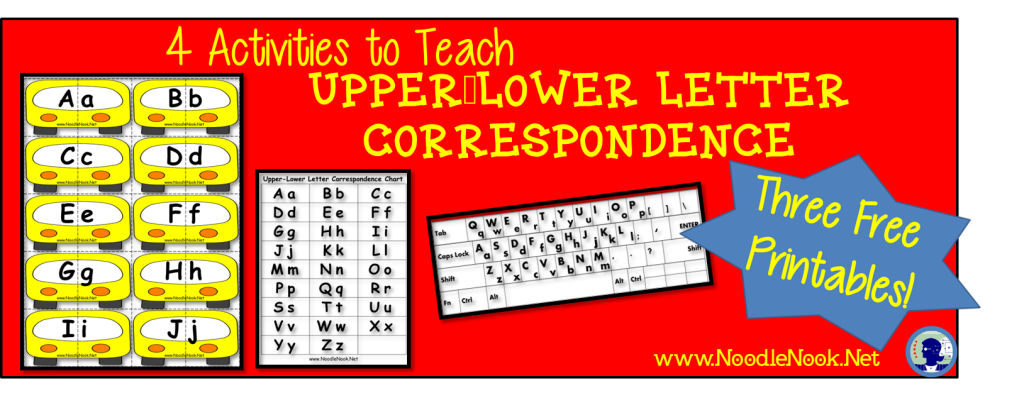Upper Lower Letter Correspondence
I was in a classroom last week helping a 20 year-old young lady try to log on to her computer. She needed to type her name and birthday (which is a great way to have students practice their personal information in a meaningful way- make it their password to get online). Now, it is second semester and she has been in high school for 6 years… but she still couldn’t do it. She had her personal information on a card in front of her as a visual aid. The teacher had written her name and birthday down for her- it was all in lowercase. Here is the weird part: When I asked her to spell her name, she could. She could identify the letters on the paper, but the only letter she could type independently was the first letter in her name.
 Have you figured out the problem yet?
Have you figured out the problem yet?
The keyboard is all in capital letters. She only had letter identification of lower case letters (except the first letter in her name which she had learned in capital letter form).
Well… now what. It’s kind of a pain to look at someone who is going on 21 and think about teaching them upper lower letter correspondence. So there are a couple of things we can do- all of which will depend on the teacher’s instructional targets, the students personal transition plan, and the rate at which the student is able to acquire new skills and generalize them.
[tweetthis]Great Activities for Upper Lower Letter Correspondence #noodlenook[/tweetthis]
So, what are some ways to address upper-lower letter correspondence?
1. Lower case letter keyboard. These are available commercially (like this one from AbleNet) and the Assistive Technology person for your district may have access to some. If you have a student who is struggling, instruction should continue to teach the skill (if appropriate), but why limit a student’s ability to act independently with a keyboard that does not support their needs? And, when you think about efficacy and sustainability of just using a lower case keyboard, remember… your cell phone qwerty keyboard uses lower case when you are typing. This skill will be sustainable.
2. Practice upper-lower letter correspondence. Some students, depending on their age and skill set, could be taught to connect upper and lower case letters. Try matching activities like this FREEBIE, or other that are readily found on Teachers Pay Teachers or Pinterest.
3. Accommodate upper-lower letter correspondence on a regular keyboard. Yup, keep at it. You may want to use an Upper Lower Letter Correspondence key (click to print the FREEBIE). Students can “look up” the letter they need.
4. Paper Keyboard to practice, practice, practice. You can also use a paper keyboard (like this FREEBIE) to practice typing- and seeing the upper-lower letter correspondence can aid in passive learning. A simple activity like typing the weekly vocabulary words on the paper keyboard (like this FREEBIE) at the student’s desk is a great activity to reinforce spelling, word identification, and upper lower letter correspondence using a paper keyboard.
Article Citation: [cite]
Now that you have a few ideas on how to make meaningful activities for students to work on their letter correspondence, what other activities have you had success with when it comes to Upper Lower Letter Correspondence? Post in the comments and share your tips and tricks!

